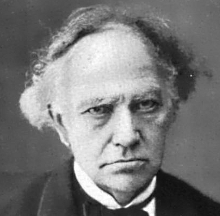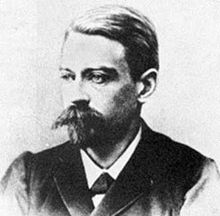Lettre d'Hermite à Stieltjes du 11 mars 1887. ``Vous avez le don précieux de la clarté, aussi je comprends sans efforts tout ce que vous faites , tandis que j'ai beaucoup de peine à lire les mémoires excellents d'ailleurs de Poincaré et d'autres.''
Lettre d'Hermite à Stieltjes du 15 mai 1889. ``J'ai reçu de l'Université de Stockholm la demande officielle de faire connaître mon opinion sur les travaux scientifiques de Madame Kowalewski et les titres que ces travaux peuvent lui donner d'être engagée définitivement et pour toute sa vie comme professeur ordinaire à l'Université. Les mémoires de Mme Kowalewski étant écrits en allemand, sauf celui qui a été couronné récemment par l'Académie des Sciences, je viens vous demander de me sortir d'anxiété, de me tirer d'un extrême embarras pour répondre à ce qu'on me demande. Madame Kowalewski mérite autant d'estime pour sa modestie, la dignité et l'élévation de son caractère que pour son merveilleux talent d'Analyste ; Mr Mittag-Leffler m'a fait savoir cependant que le grand retentissement du prix de l'Académie des Sciences a provoqué chez plusieurs personnes un sentiment d'envie et de jalousie contre lequel il est nécessaire de la défendre, et j'ai recours à vous pour me donner le moyen de remplir cette tâche. Il y a urgence, il faudrait que le rapport demandé soit envoyé à Stockholm avant le 24 mai ; voudriez-vous donc me fournir l'indication que vous jugeriez digne d'être signalée à l'attention des Géomètres, dans les travaux suivants : [[...]] Étendez-vous sur ceux de ces mémoires qui vous auront le plus intéressé, en ne me donnant que quelques mots sur les autres, je me chargerai du mémoire sur la rotation. Vous voyez, mon cher ami, que, au-dessus de l'intérêt mathématique, il s'agit d'une situation singulière, douloureuse et brillante, en même temps, d'une femme professeur dans une Université !''
Lettre de Stieltjes à Hermite du 16 mai 1889. ``Je ne vous dissimulerai pas que votre demande relative aux mémoires de Mme Kowalewski me cause quelque embarras, mais comme je vois qu'il y a urgence, je ferai de mon mieux, et je tâcherai de ne point dire des sottises (il est bien entendu que je ne me pose pas en juge compétent). Je vous avouerai aussi qu'en général il me répugne un peu de juger les travaux d'autrui et le même sentiment me fait prendre en horreur les examens. Il est bien lamentable qu'il soit nécessaire de prendre la défense de Mme Kowalewski et cela fait peu d'honneur aux Suédois. Je vous avertis d'avance que je pourrai dire à peine quelque chose des mémoires dans les tomes 4 et 6 des Acta. Je connais à peu près bien le premier (sur la réduction des intégrales abéliennes) où le sujet est exposé d'une manière très lucide, mais je sais que ce sujet a été l'objet de beaucoup d'autres travaux, et ceux-là je ne les connais pas du tout. Comme Mr Picard est parmi les auteurs qui ont approfondi le plus ce sujet, je me permets de le nomner ici. En tout cas moi je ne pourrai pas vous dire beaucoup sur ce mémoire et je m'attacherai surtout aux mémoires dans les Astr. Nachrichten et dans le Journal de Crelle tome 80.''
Lettre d'Hermite à Stieltjes du 7 avril 1890. ``Mr Jordan, qui ne cite jamais à moins d'une faveur particulière, ne mentionne ni Mr Pochhammer ni mes leçons qu'il a eues certainement sous les yeux, car sa méthode est au fond la mienne, présentée sous une forme plus générale. J'ai aussi fait, le premier, dans ces leçons (Résumé du Cours d'Analyse, École Impériale Polytechnique, 1868-1869, p. 2-8) une étude spéciale de l'intégrale $\int_a^b\! f'(x)dx/(1+f^2(x))$ et il me la prend sans prévenir (C. Jordan, Cours d'analyse de l'École polytechnique, volume II, Paris, 1883, p. 64-66), mais je m'en soucie fort peu. Darboux, qui a été pillé avec grand profit, n'est pas absolument content ; ni lui ni moi ne nous plaindrons, Mr Jordan au fond est un excellent homme et son 3ème volume (1887) m'a rendu les plus grands services, de sorte qu'il convient de passer légèrement sur le défaut des citations.''
Lettre d'Hermite à Stieltjes du 17 janvier 1891. ``Pour moi, j'ai donné bien des sujets de thèse, mais personne ne m'a jamais fait un bout de calcul et à l'avenir, comme par le passé, je ne dois compter que sur moi seul.''
Lettre d'Hermite à Stieltjes du 10 mai 1892. ``Peut-être vous intéressera-t-il d'apprendre que la Section de Géométrie a décidé de proposer à l'Académie M. Sophus Lie, comme successeur de Kronecker, à la place de membre correspondant. J'ai quelque regret qu'on ait repoussé Fuchs ou Lipschitz, dont j'ai pris la défense, mais sans pouvoir insister.''
Lettre de Stieltjes à Hermite du 19 septembre 1892. ``Ce cours autographié (de Felix Klein) est bien curieux, l'auteur semble vouloir donner un compte rendu juste et impartial de la découverte des fonctions fuchsiennes et il arrive facilement à s'en attribuer la plus grande part, sans se douter, à ce qu'il paraît, qu'il était bien la personne la moins désignée pour écrire cette histoire d'une manière impartiale. M. Klein est certainement un géomètre d'un grand talent qui est bien au-dessus de mes éloges, et il reconnaît clairement le mérite de ses propres travaux. Je n'y vois pas de mal et je veux bien que ce ne soit que de la clairvoyance. Mais il me paraît que cette clairvoyance lui manque trop facilement dès qu'il parle des travaux des autres. Du reste ce cours autographié n'est pas dans le commerce et n'a pas ainsi été publié franchement.''
Lettre d'Hermite à Stieltjes du 27 septembre 1892. ``Ce que vous me dites de Mr Klein concorde absolument avec l'opinion qu'on a de lui [[ ... ]] ; mais comme il trouve le moyen de produire grâce à des collaborateurs !''.
Source : Extraits de Partie inédite de la correspondance d'Hermite avec Stieltjes, Cahier du séminaire d'histoire des mathématiques, tome 4 (1983), p. 75-87. Les références se rapportent aux pages de la Correspondance d'Hermite et de Stieltjes, Paris, Gauthier-Villars (1905). ``En décembre 1970, Madame Jean Willey, fille d'Émile Picard et petite-fille de Charles Hermite, a permis de consulter les papiers d'Hermite qui se trouvaient à cette époque chez elle. Parmi ceux-ci figurait la partie inédite de la correspondance d'Hermite avec Stieltjes, recopiée probablement pour Émile Picard par les éditeurs de la correspondance B. Baillaud et H. Bourget. Depuis cette époque, elle a été confiée aux Archives de l'Académie des Sciences de Paris.'' On rapporte cette réflexion d’Hermite à son gendre Émile Picard durant un repas de famille : ``pendant que vous alliez au congrès écouter les théorèmes des autres, moi j’en démontrais''.
Leave a Comment
